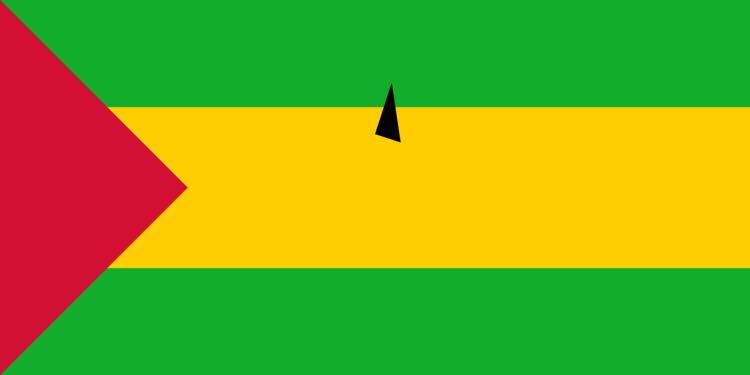Population 192,993 (2013) GNI per capita 2,950 PPP dollars (2013) | Life expectancy 66.14 years (2012) Population growth rate 2.6% annual change (2013) | |
 | ||
Fertility rate 4.14 births per woman (2012) | ||
This article is about the demographic features of the population of São Tomé and Príncipe, including population density, ethnicity, education level, health of the populace, economic status, religious affiliations and other aspects of the population.
Contents
- Map of SC3A3o TomC3A9 and PrC3ADncipe
- Population
- Vital statistics
- Fertility Rate The Demographic Health Survey
- CIA World Factbook demographic statistics
- Sex ratio
- Life expectancy at birth
- Nationality
- Ethnic groups
- Religions
- Languages
- Literacy
- References
Map of S%C3%A3o Tom%C3%A9 and Pr%C3%ADncipe
Of São Tomé and Príncipe's total population, about 131,000 live on São Tomé and 6,000 on Príncipe. All are descended from various ethnic groups that have migrated to the islands since 1485. Six groups are identifiable:
Although a small country, São Tomé and Príncipe has four national languages: Portuguese (the official language, spoken by 95% of the population), and the Portuguese-based creoles Forro (85%), Angolar (3%) and Principense (0.1%). French is also learned in schools, as the country is a member of Francophonie.
In the 1970s, there were two significant population movements—the exodus of most of the 4,000 Portuguese residents and the influx of several hundred São Toméan refugees from Angola. The islanders have been absorbed largely into a common Luso-African culture. Almost all belong to the Roman Catholic, Evangelical Protestant, or Seventh-day Adventist churches, which in turn retain close ties with churches in Portugal. There is a small but growing Muslim population.
Population
According to the 2010 revision of the World Population Prospects the total population was 165,000 in 2010, compared to only 60,000 in 1950. The proportion of children below the age of 15 in 2010 was 40.3%, 55.8% was between 15 and 65 years of age, while 3.9% was 65 years or older .
Vital statistics
Registration of vital events is in São Tomé & Príncipe not available for recent years. The Population Departement of the United Nations prepared the following estimates.
Births and deaths
Fertility Rate (The Demographic Health Survey)
Fertility Rate (TFR) (Wanted Fertility Rate) and CBR (Crude Birth Rate):
Fertility data as of 2008-2009 (DHS Program):
CIA World Factbook demographic statistics
The following demographic statistics are from the CIA World Factbook, unless otherwise indicated.
Sex ratio
at birth: 1.03 male(s)/female
under 15 years: 1.03 male(s)/female
15–64 years: 0.93 male(s)/female
65 years and over: 0.84 male(s)/female
total population: 0.97 male(s)/female (2000 est.)
Life expectancy at birth
total population: 65.25 years
male: 63.84 years
female: 66.7 years (2000 est.)
Nationality
noun: São Toméan(s)
adjective: São Toméan
Ethnic groups
Mestiços, angolares (descendants of Angolan slaves), forros (descendants of freed slaves), serviçais (contract laborers from Angola, Mozambique, and Cape Verde), tongas (children of serviçais born on the islands) and Europeans (primarily Portuguese)
Religions
Roman Catholic 55.7%, Adventist 4.1%, Assembly of God 3.4%, New Apostolic 2.9%, Mana 2.3%, Universal Kingdom of God 2%, Jehovah's Witness 1.2%, Other 6.2%, None 21.2%, Unspecified 1% (2012 est.)
Languages
Portuguese 98.4% (official), Forro 36.2%, Cabo Verdian 8.5%, French 6.8%, Angolar 6.6%, English 4.9%, Lunguie 1%, Other (including sign language) 2.4%
Literacy
definition: age 15 and over can read and write
total population: 73%
male: 85%
female: 62% (1991 est.)
